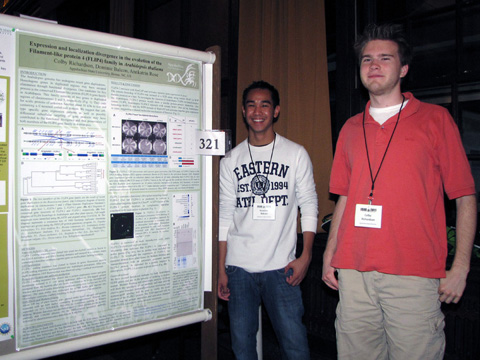 |
Dr. Annkatrin RosePlant Molecular Biologist |
||
|
COURSES |
Expression and localization divergence in the evolution of the Filament-like protein 4 (FLIP4) family in Arabidopsis thalianaColby Richardson, Dominic Balcon, Annkatrin Rose The Arabidopsis genome contains multiple chromosomal regions with a high level of homology, suggesting recent genetic duplication. Homologous genes in these regions may have escaped elimination as pseudogenes through functional divergence, thus selectively preserving families of similar genes. One candidate for this process is the FLIP4 gene family in Arabidopsis. This family consists of two genes in duplicated regions of chromosomes 3 and 5, respectively, which are conserved as single-copy genes in other plant species such as tomato and rice. They code for acidic proteins of about 50 kDa in size with a C-terminal coiled-coil domain. Tomato FLIP4 and Arabidopsis FLIP4-2 both interact with the WPP domain of RanGAP and activate reporter gene expression in yeast, suggesting a common molecular mechanism of function. However, in comparison to other FLIP4 proteins, Arabidopsis FLIP4-2 contains a functional N-terminal chloroplast targeting peptide which facilitates its localization to the chloroplasts of leaves. In contrast, Arabidopsis FLIP4-1 mRNA is expressed in the reproductive pathway and specifically in the sperm cells of pollen grains. We suggest that divergence of both regulatory DNA sequences resulting in cell-type specific gene expression patterns as well as protein targeting signals resulting in differential subcellular targeting of gene products has contributed to the preservation of both members of the FLIP4 gene family after gene duplication in Arabidopsis. Poster # 321 at the 22nd International Conference on Arabidopsis Research, Madison, WI, June 22-25, 2011.
|
||
